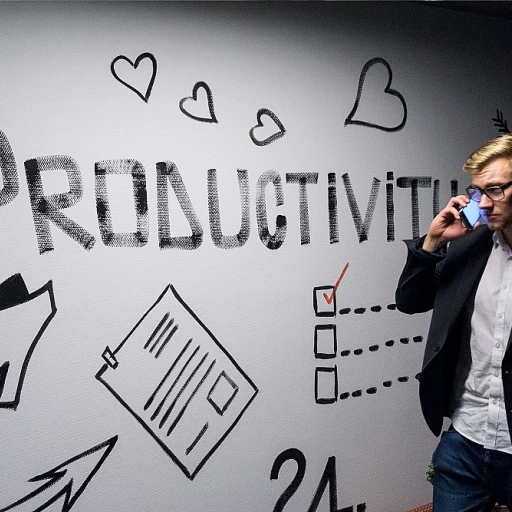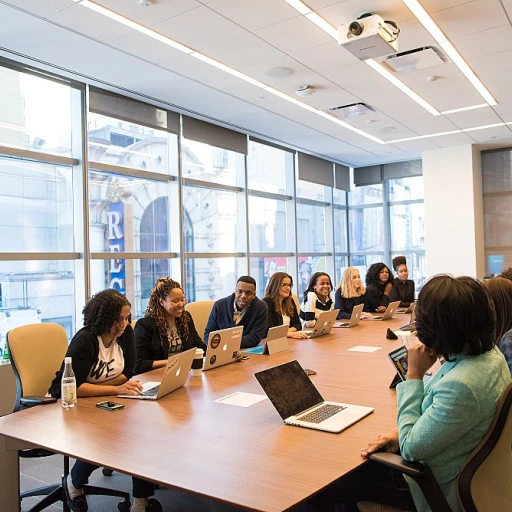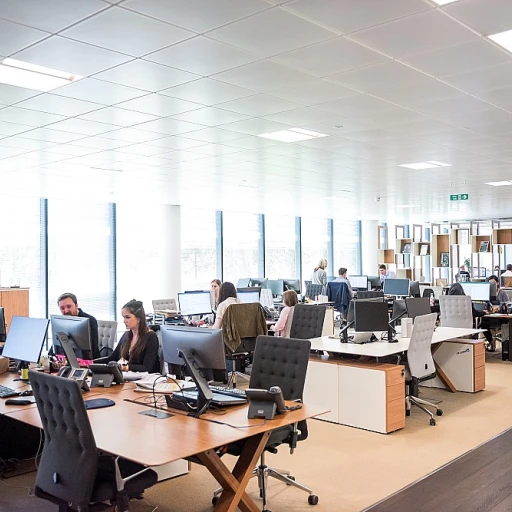
The Role of AI in HR Decision-Making
The Emerging Role of AI in HR: Navigating Decision-Making
The integration of Artificial Intelligence (AI) in human resources (HR) has ushered a transformative shift in decision-making processes. AI promises efficiency and precision, yet it commands a balance between innovative potential and ethical responsibilities. As employers increasingly rely on AI algorithms to optimize employment strategies, it becomes crucial to understand the multifaceted impact on fairness within the workplace. AI's ability to analyze vast datasets can potentially reduce human error and introduce objective decision-making, minimizing the risk of biases attributed to subjective human influence. However, as AI handles tasks such as recruitment, performance assessments, and employee engagement, it raises pivotal questions about the treatment of individuals based on protected characteristics. While AI can help identify patterns of discrimination based on race, age, and other protected factors, its use can inadvertently perpetuate these biases if not carefully managed. For example, AI can lead to disparate treatment or preferential treatment of candidates in recruiting processes, depending on how the algorithms are structured and trained. Understanding these nuances is vital for maintaining a fair and equitable workplace environment. Ensuring that AI systems do not contribute to discriminatory practices is tantamount to implementing anti-discrimination measures. Employers must remain vigilant against both disparate impact and disparate treatment, which are key concepts in understanding differential treatment in HR, as detailed in resources such as insights from AI in Human Resources. Moreover, HR professionals need to address the impact of differential treatment within the justice system and balance the promise of AI tools against the justice of their application. The role AI plays in HR decision-making requires thoughtful consideration and strategic oversight, ensuring fairness anchors the technological advancements reshaping the workforce.Defining Differential Treatment in HR
Decoding Differential Treatment in Human Resources
Navigating the complexities of differential treatment in HR practices can be a challenge for many organizations. This kind of treatment occurs when employees are treated differently based on protected characteristics, such as age, race, or gender, which often leads to unintentional discrimination, including disparate or preferential treatment. In today's workplace environment, employers must be acutely aware of discrimination laws that protect employees from differential treatment. However, even with this awareness, the impact of differential treatment persists. It's an undeniable truth that ensuring fairness in employment practices is not just a legal obligation but also a crucial element for maintaining a just workplace. One area where differential treatment often manifests is through the use of AI algorithms, which can inadvertently perpetuate bias. These algorithms, while designed to make objective decisions, have the potential to embed historical biases present in training data. This can result in discriminatory outcomes in employment decisions, subsequently affecting racial, ethnic groups, or individuals with mental health conditions, like depression. Organizations need to vigilantly search for and address any discriminatory impact within their HR processes. There are numerous case studies and research efforts, such as those available through platforms like PubMed and PMC, that highlight both the successes and challenges companies face in this area. For instance, exploring organizational awareness with AI can offer insights into how AI tools might affect differential treatment in employment scenarios. Employers must remain vigilant and proactive in applying anti-discrimination measures effectively. By evaluating the current use of AI technologies and understanding their potential pitfalls, companies can enhance fairness and equity in their HR practices, ensuring they serve both their employees and customers justly. For more on enhancing organizational awareness with AI in human resources, you can read further here. The journey towards equitable treatment in the workplace is ongoing, with much work still to be done, but with appropriate awareness and strategies, progress is possible.AI Algorithms and Bias: A Double-Edged Sword
Unveiling Bias Within AI: Challenges and Opportunities
In the realm of human resources, the application of artificial intelligence has revolutionized decision-making processes. However, it also opens the door to biases that mirror challenges faced in broader society concerning differential treatment. AI algorithms, despite their promise of efficiency, are not immune to inherent biases that can lead to discriminatory actions against certain groups.
Algorithms are constructed using historical data, which often contains disparate treatment due to underlying societal biases. When these datasets are not carefully vetted or adjusted, AI systems might inadvertently replicate patterns of discrimination based on protected characteristics like age, race, and gender. For instance, reliance on biased data can lead to unjust exclusion of certain racial or ethnic groups in the workplace.
Studies, such as those found on PubMed, document scenarios where AI-based decision-making exhibits biases similar to those seen in the juvenile justice system and systems focusing on mental health. In the employment sector, algorithms may disregard employer commitment to fair practices, leading to preferential or special treatment of certain individuals over others. The impact of differential treatment often becomes pronounced when evaluating equal opportunities for African American workers versus their counterparts.
Moreover, AI's potential for enhancing HR practices hinges on thorough oversight and continuous performance metrics evaluation. Anti-discrimination laws in the United States mandate careful consideration of these systems' outputs to prevent discriminatory employment decisions.
Thus, while AI holds the potential to revolutionize HR functions, its impact depends on proactive strategies to identify and mitigate biases. The future of AI in HR will rely on balancing technological advancement with ethical considerations, ensuring equitable treatment across the board.
Ensuring Fairness: Strategies and Best Practices
Promoting Equitable Outcomes in AI HR Practices
In employing artificial intelligence in human resources, one of the pressing concerns is ensuring that the algorithms and models used do not perpetuate or exacerbate existing disparities. AI systems can inadvertently mirror and magnify biases present in historical data, leading to discriminatory outcomes against certain groups based on age, race, ethnicity, or other protected characteristics. A foundational step in promoting fairness involves rigorously assessing whether AI tools contribute to differential treatment or disparate impact in employment decisions. Differential treatment in this context means that individuals are treated unequally based on protected characteristics, which can result in an unfair advantage or disadvantage in the workplace. For example, AI systems should avoid decisions that favor one racial ethnic group over another, creating a more inclusive and unbiased environment. One practical strategy for ensuring fairness is to diversify the data sets used to train AI models, avoiding data that might reflect historical biases. Additionally, human oversight remains essential in AI-driven decision-making processes to detect any inadvertent discriminatory outcomes. It’s also crucial for organizations to implement regular audits of their AI systems to pin down any potential biases, adjusting their algorithms accordingly. These practices can similarly be seen in the juvenile justice system where there is often a need to ensure neutrality.Case Studies: Successes and Challenges
Practical Insights from Real Experiences
Understanding the impact of AI on fairness within human resources requires examining both successful implementations and challenges organizations have faced. This real-world perspective sheds light on how differential treatment can occur when deploying AI systems. Employers in the United States have explored AI-driven solutions to improve fairness in employment decisions, such as recruitment and promotions. Some companies have successfully used AI to mitigate potential discrimination based on protected characteristics like age, racial and ethnic backgrounds. However, disparate treatment remains a concern when algorithms inadvertently encode discriminatory patterns. For example, an organization implementing AI in its recruitment process aimed to eliminate human bias. The algorithm, however, unintentionally favored candidates from certain age groups, resulting in significant age-based discrimination. This case highlights how sensitive employment decisions may become tangled with differential outcomes if not closely monitored. The justice system's experience with AI in the juvenile justice sector offers parallels, emphasizing the importance of transparency and fairness. Employers must be vigilant in refining these tools to prevent any discriminatory practices while aiming for justice and equality. Comprehensive understanding and application of anti-discrimination laws is pivotal. For instance, understanding how AI can lead to unintentional preferential treatment is key to ensuring fair treatment in the workplace. Lessons from public databases, such as PubMed and PMC, illustrate the significance of ongoing research into the impact of AI on mental health aspects like workplace-related depression, suggesting that equitable resource allocation remains crucial. Searching through these databases reveals insights into how differential treatment affects various facets of employment. These learnings serve as a foundation for developing more inclusive AI strategies. It’s essential for companies to regularly evaluate their AI systems to ensure their impact aligns with ethical standards and the fair treatment of all employees. For more comprehensive insights into the evolving role of AI in HR, visit specialized online resources that delve into these complex topics. By learning from past implementations, companies can aim for more inclusive and ethical AI-driven HR practices.The Future of AI in HR: Balancing Innovation and Ethics
Balancing Innovation with Ethical Considerations
The future of artificial intelligence in human resources is a delicate balancing act between innovation and ethics. As AI continues to evolve, its impact on fairness in HR practices becomes more pronounced. Employers must remain vigilant to ensure that AI-driven decisions do not inadvertently lead to discrimination based on protected characteristics such as age, race, or gender.
Addressing Disparate and Preferential Treatment
AI systems can sometimes perpetuate disparate treatment or preferential treatment if not carefully managed. For example, algorithms trained on biased data may inadvertently favor certain groups over others, leading to discriminatory practices in the workplace. This is particularly concerning in the United States, where anti-discrimination laws are stringent, and any differential treatment based on protected characteristics can have serious legal repercussions.
Implementing Robust Anti-Discrimination Measures
To mitigate the risk of discrimination, HR professionals must implement robust anti-discrimination measures. This includes regular audits of AI systems to identify and rectify any biases that may lead to differential treatment. Additionally, fostering a culture of inclusivity and diversity can help counteract the potential negative impact of AI on fairness in HR practices.
Learning from Case Studies and Real-World Examples
Examining case studies and real-world examples of AI implementation in HR can provide valuable insights into both successes and challenges. For instance, some organizations have successfully used AI to enhance workforce flexibility and improve talent management, while others have faced challenges related to bias and fairness.
Looking Ahead: The Role of AI in Shaping the Future Workplace
As we look to the future, the role of AI in shaping the workplace will continue to grow. It is crucial for HR professionals to stay informed about the latest developments in AI technology and its implications for fairness and discrimination in employment practices. By doing so, they can ensure that AI serves as a tool for positive change, rather than a source of injustice in the workplace.












